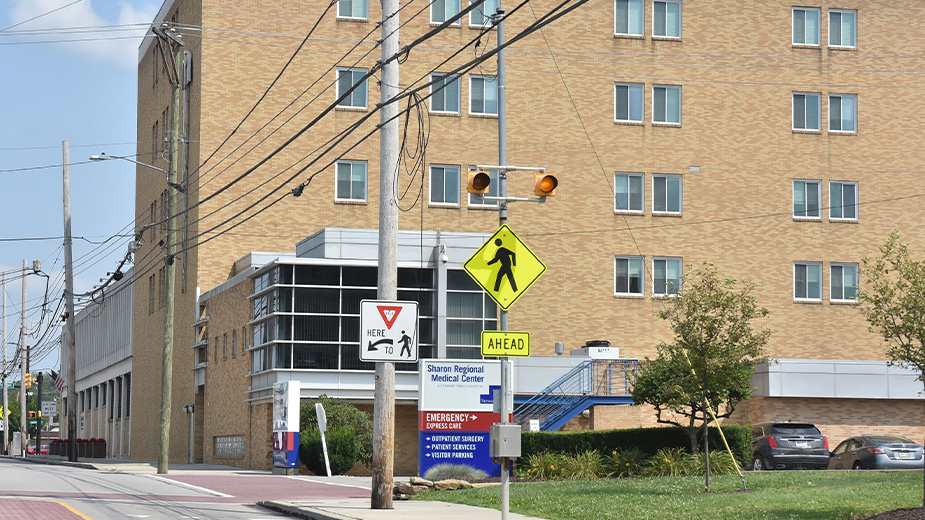Senior Care Centers Prepare for ‘Silver Tsunami’
YOUNGSTOWN, Ohio – Ten to 15 years ago, having more than one resident over the age of 90 living at Copeland Oaks in Sebring would have been “highly unusual,” says Kim Strabala.
But the nurse liaison says the average age is “much higher” with today’s resident population. More residents 85 or older are living independently in apartments or villas, and even some 90-year-olds are still driving.
“We have to anticipate that the average age is going to increase as the days go forward,” she says.
Meeting the needs and demands of an older resident mix is among the challenges being addressed by operators of senior care centers.
Other issues they face include a population that is more technologically savvy and wants better – and more – mealtime options, the challenge of hiring and retaining qualified employees, reimbursement and the approaching influx of senior citizens, dubbed the “silver tsunami.”
Between 2012 and 2050, the U.S. Census Bureau projects the population of people age 65 and older will reach 83.7 million, nearly double the estimated population of 43.1 million in 2012. By 2020, those 60 and older will make up a quarter of the population in half of Ohio’s counties.
The silver tsunami is among the factors driving expansion at the Woodlands at AustinWoods in Austintown, says Sally Demidovich, administrator. AustinWoods is among two skilled nursing centers, a rehabilitation center and an assisted living residentce operated by Woodlands LLC.
AustinWoods is converting one of its units into a Medicaid-waiver assisted living – a need the company identified – and is adding a 24-bed rehabilitation unit on the front of the AustinWoods campus.
“We will have the space available to take care of those people when that increase does happen,” Demidovich says.
Shepherd of the Valley Lutheran Retirement Services, which operates locations in Boardman, Niles, Poland and Howland, recently began construction on a campus in Liberty Township that will include congregate living apartments. Those units will offer independent living with weekly wellness checks, meal plans and light housekeeping, says Rich Limongi, CEO.
At other locations, Shepherd is converting semiprivate rooms into private rooms and investing capital dollars into making the centers more homelike rather than institutional, he reports.
Additionally, senior living operators need to adopt technology to address the needs of the more technologically savvy residents, Limongi says. While telehealth and telemedicine present “a number of solutions” to address those challenges by providing health care from a distance using telecommunication technology, providers have to consider how they will get reimbursed.
“We’ll just have to pay for it ourselves knowing it will solve certain challenges we’re having,” he says.
Reimbursement changes in the payer mix represent another of the major issues in the industry, Limongi adds.
“One of the things we’re seeing is your traditional Medicare Part A is going by the wayside. So what we’re seeing is more managed care/private insurance payers come into the mix,” he explains. For nursing homes, that has resulted in decreased length of stays and lower reimbursement rates.
Another issue facing skilled nursing centers like those operated by EDM Management is patient acuity, says Diane Reese, president. The company operates senior care centers in Poland, Canfield, Austintown, North Lima and Youngstown.
“The patient acuity that we are seeing in our skilled nursing facilities continues to increase,” Reese says. Those facilities are more akin to medical-surgical floors in hospitals. Assisted living communities are seeing residents aging in place as well.
In preparation for the expected wave of incoming seniors, EDM is exploring further growth, she says. The Inn at Poland Way opened two years ago and is nearly at capacity, Reese says. Because there are waiting lists for the memory care units at two of its centers, it is adding a similar unit and services to the Inn at Walker Mill, she reports.
Reimbursement is among the areas of concern at St. Paul’s Senior Living Community in Greenville, Pa., acknowledges Rita Clemente, vice president of community relations. In addition to the challenges posed by private insurance, Medicare and Medicaid, facilities are beginning to care for a resident population made up of individuals who weren’t the savers that their parents were.
“We’re preparing for a generation who has very different perspective than their parents. They want more options, more choices,” Clemente adds. “We are working to pique their interests and meet their expectations.” That means independent living options such as different styles of homes with open floor plans and three-bedroom units with two-car garages.
Shepherd, from the study completed before the Liberty project, also sees higher demand in assisted living for memory care units, a “very underserved line of service in this area,” Limongi says.
“As you look at assisted living, you need to look at the strategy a little bit differently,” he adds. Where seniors would move in at age 70 or 80, they are now moving in their mid- to late 80s, when they are already experiencing some decline, he says.
“Dining is going to continue to be a driver for people to move into your retirement community and it’s also going to be a driver for satisfaction ratings,” he says. To stay competitive, dining operations that mirror local restaurant options are a must rather than “nice to have,” he says.
Recruiting staff is probably the biggest challenge, says Joe Cilone, CEO of CCHC Health Care Centers.
CCHC operates facilities in Calcutta, North Lima, Carrollton and Hubbard, and is taking over management of, leasing or acquiring more centers, including two in the Cleveland area, Cilone reports.
“It’s easier to survive when you have volume,” he says. Having more properties makes having a building that might have a census issue “easier to stomach.”
Though many employees have been with CCHC for 20 years or more, about 10% to 15% of the workforce turns over, he says.
“Nurse’s aides are very challenging to get right now,” Cilone says. “It’s a competitive market and getting quality talent is one of the most important things we deal with.”
While sign-on bonuses and attendance incentives have helped to retain staff, “It’s hard to get people who really want to work,” he says. CCHC uses everything from social media to job fairs to newspaper ads to recruit, and offers “very fair” rates along with 401(k) plans and benefits such as personal and vacation time, he says.
Once someone is hired, the learning curve presents another challenge. “They have to understand your processes and your systems,” he says.
“I would venture to say there’s not one nursing home that doesn’t suffer with nursing assistants as far as staffing and turnover,” Copeland Oaks’ Strabala offers.
Copeland Oaks has one of the highest ratios of patients to nursing staff, including state-tested nursing assistants, but “it’s a hard job,” she says. Because of reimbursement rates, providing adequate pay is difficult for positions that are so hands on and “so physically and mentally demanding,” she says.
“Whether it’s traditional Medicare or an HMO or a commercial plan, the daily reimbursement we get for that patient has to cover an enormous field of costs,” she says.
St. Paul’s human resource department aims to keep wage and benefit packages competitive with the industry. A major issue, Clemente says, remains finding people who want to work in health care.
“Working in health care takes a special person with particular character, with a particular personality, with a particular set of skills,” she laments.
Staffing is “a natural issue,” particularly because of the around-the-clock, every-day nature of the work, EDM’s Reese acknowledges, but that also makes a career in the field fulfilling and rewarding.
“We want to be selective, to find people who are compassionate and caring, and who have our philosophy,” she says. “Even with the challenges that we face, it all comes down to it’s still a people business, and it’s taking care of people.”
Woodlands is “more competitive than most” in terms of pay and benefits, Demidovich asserts. “We have just a few positions that we constantly turn over,” she says.
Among the benefits Woodlands offers is flexible scheduling, with four-, eight- and 12-hour shifts.
“We try to stay ahead of that game, and if we have report-offs we replace those,” she says. “We don’t allow our residents to have less staff reporting.”
Copyright 2024 The Business Journal, Youngstown, Ohio.



